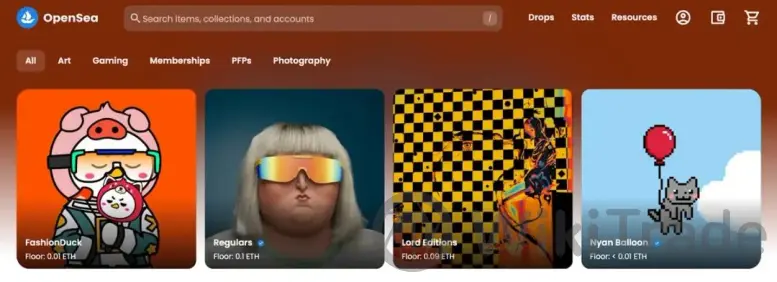How to create an nft
Abstract: Minting an NFT is the process of creating a unique digital asset so that it can be bought, sold, and traded.
What is NFT Minting?
NFT minting is the process of turning your digital creation into a unique, blockchain-verified asset that can be bought, sold, and traded. When you mint an NFT, you're uploading your digital content to a blockchain platform, which assigns it a unique identifier that serves as proof of ownership.

Key Points to Understand:
- NFTs are non-fungible, meaning each one is unique and cannot be exchanged on a one-to-one basis like cryptocurrencies.
- Popular blockchains for minting NFTs include Ethereum, Tezos, Avalanche, and Flow.
- NFTs can represent both digital and real-world assets, from art to property.

How Does NFT Minting Work?
To mint an NFT, you'll need a crypto wallet filled with the necessary cryptocurrency to cover transaction fees. Here's a streamlined process:
- Create a Unique Asset: Decide on the type of digital asset you want to create, such as digital art, music, or collectibles.
- Buy Cryptocurrency: Purchase the crypto used on your chosen blockchain, like Ether for Ethereum.
- Deposit Crypto into a Wallet: Use a non-custodial wallet to have full control over your funds.
- Choose an NFT Marketplace: Select a platform like OpenSea, Rarible, or Mintable to mint and sell your NFT.
- Add Your Assets to the NFT Collection: Follow the marketplace's instructions to mint your NFT and add it to your collection.
- Democratizes Ownership: Allows multiple parties to own a stake in a digital asset.
- Selling Unique Digital Assets: Enables trading, buying, or selling stakes in assets, with potential for artists to receive royalties.
- Store and Preserve Value: NFTs can store value similar to physical assets, with the security of blockchain technology.
- Lazy Minting: List your NFT without upfront costs, and pay gas fees only when it sells.
- Gasless Marketplaces: Platforms like Mintable and Curate offer free publishing experiences.
- Polygon Network: Mint on the Polygon blockchain to avoid upfront gas fees.
- Create a Digital Wallet: Essential for storing and managing your cryptocurrency.
- Choose an NFT Marketplace: Platforms like OpenSea and Rarible offer user-friendly interfaces and low fees.
- Buy Cryptocurrency: Ethereum is a popular choice for NFT transactions.
- Connect Your Wallet: Link your wallet to the marketplace to facilitate transactions.
- Upload the File: Prepare and upload your digital asset in the desired format.
- Set Up Auction or Fixed Price: Decide on the pricing structure for your NFT.
- Add a Description: Provide a compelling description to attract potential buyers.
- Pay the Listing Fee: Cover the initial costs to list your NFT on the marketplace.

Benefits of Minting an NFT
Minting an NFT offers several advantages:

Costs Involved in Minting an NFT
The cost to mint an NFT varies by marketplace and blockchain. Ethereum has higher gas fees, while others like Solana and Cardano are cheaper. Some marketplaces offer free listing or “lazy minting,” where you only pay gas fees when the NFT is sold.

How to Mint an NFT for Free
To minimize costs, consider:
Selling NFT Art: A Step-by-Step Guide
Conclusion
Minting and selling NFTs can be a rewarding way to monetize your digital creations. By following these steps and choosing the right platform, you can navigate the world of NFTs with confidence. Remember to consider the costs involved and explore options for minimizing expenses to maximize your profits.




Top News
 WikiTrade
WikiTrade WikiTrade
WikiTrade WikiTrade
WikiTrade WikiTrade
WikiTrade WikiTrade
WikiTrade WikiTrade
WikiTrade WikiTrade
WikiTrade WikiTrade
WikiTrade WikiTrade
WikiTrade WikiTrade
WikiTrade


